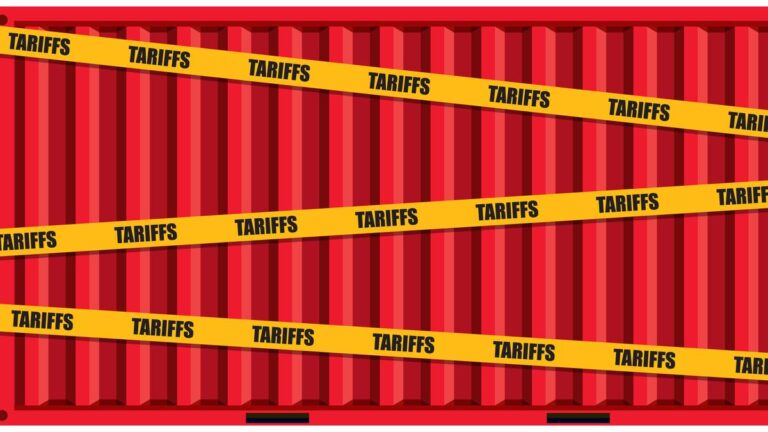The looming expiration of the New START Treaty, the only remaining bilateral nuclear arms control agreement between the United States and Russia, has focused national security experts on what comes next. Given the impending deadline, some strategists argue that the United States should engage Russia in a new nuclear agreement and that the way to do so is to open negotiations while continuing to abide by the limits set by New START even after the treaty expires, in early 2026. The first part of this argument has some merit; the second does not. To meet the current moment, the United States must move past New START.
At the time it was signed in 2010, New START had some advantages. The treaty set constraints on deployed strategic nuclear warheads, limiting each side to 1,550 warheads. It also had domestic political utility: in exchange for Republican support for the treaty, Democrats agreed to support modernizing aging strategic nuclear forces. But New START was written for a geopolitical landscape that no longer exists. Back then, although Russian President Vladimir Putin had begun to show his growing discontent with the prevailing world order, he had not yet revealed his determination to rebuild, to the maximum extent possible, the Soviet empire. Moreover, Russia’s Cold War–era strategic and regional nuclear forces were aging, and its own full-scale modernization effort had not yet taken shape. Perhaps most important, many observers at the time considered China to be relatively benign and largely content to keep its military within its own borders. Although there were hints that it was seeking future capabilities, China’s nuclear forces were based on older systems and seemed limited to maintaining “a minimum means of reprisal.”
Fifteen years later, the world has changed dramatically. Putin and Chinese leader Xi Jinping have emerged as aggressive and expansionist leaders. Russia has, according to Putin, modernized 95 percent of its strategic nuclear forces, and it is pursuing several novel intercontinental systems that were designed to get around New START constraints. Most worrying, Putin has fielded a regional nuclear force of some 2,000 short- and medium-range lower-yield weapons that can be launched from the ground, air and ships. This regional force obliterates the 1991 and 1992 Presidential Nuclear Initiatives, by which both Moscow and Washington agreed to eliminate all army tactical nuclear weapons and dramatically slash holdings of navy and air force tactical nuclear weapons.
China, meanwhile, is undertaking what Admiral Charles “Chas” Richard, the former commander of the U.S. Strategic Command, described as a “strategic breakout.” The “explosive growth” of China’s nuclear arsenal, he said, “can only be described as breathtaking.” Beijing, too, is now busy fielding a highly modernized regional nuclear force and is en route to becoming a full-blown nuclear peer to the United States. It is also collaborating with Russia in new ways that threaten U.S. security. As the 2023 congressionally mandated, bipartisan Strategic Posture Commisson unanimously noted: “The new partnership between Russian and Chinese leaders poses qualitatively new threats of potential opportunistic aggression and/or future cooperative two-theater aggression.”
In a world with two potential nuclear-armed enemies, New START no longer provides for U.S. and allied security. By constraining U.S. strategic forces, it undermines the United States’ ability to deter Russia and China simultaneously. New START also fails on a regional level by not addressing the shorter-range nuclear weapons that Russia or China would likely use first in wartime. In other words, New START is the wrong treaty for the current time. In the near term, the only way for the United States to meet this new world order is to let the treaty expire and begin increasing its own capabilities.
TREATY TRAPS
For the past century, arms control agreements have been used to constrain threats posed by potential aggressor nations. But for the most part, these agreements have worked only when none of the signatories harbored aggressive intent. Where there was such intent, arms control treaties have been covertly or overtly violated or channeled arms competition into areas that were not limited. The naval treaties of the 1920s and 1930s offer a case in point: they limited capital ships but excluded submarines, allowing a robust competition in the latter. And by the 1930s, some of the parties, particularly Nazi Germany, merely pretended to abide by treaty limits. In more recent decades, the Soviet Union and now Russia have been repeat offenders. In the 1970s, the Soviet Union violated the Biological Weapons Convention shortly after its signing, and then went on to violate the Anti-Ballistic Missile Treaty in the 1980s.
Since coming to power in Russia, Putin has violated nine separate arms control agreements and now appears ready to skirt two more: the State Department’s most recent arms control compliance report notes that Putin is following his Soviet predecessors in contravening the Biological Weapons Convention by maintaining “an offensive biological warfare program,” and after intelligence reports indicated Russia may be planning to put a nuclear weapon into Earth’s orbit, Russia vetoed a UN resolution reaffirming the Outer Space Treaty. Moreover, by deliberately taking reckless actions such as cutting in front of U.S. naval and air forces, Putin’s military routinely ignores the 1972 Incidents at Sea Agreement and the Reagan-era Prevention of Dangerous Military Activities Agreement, which both sought to regulate militaries’ conduct in order to avoid accidents that could lead to inadvertent escalation or miscalculation. Given these willful and continuing violations, the prospect of negotiating a meaningful arms control deal with Putin under the best of circumstances is far-fetched. Add to the calculus that Moscow’s forces have stepped up attacks on Ukrainian cities even as Putin gives rhetorical support to peace talks, and it beggars belief that Russia would engage in good-faith arms control negotiations over the next year.
In the near term, nuclear discussions between Washington and Beijing seem similarly improbable. China, for its part, regards any willingness to engage in arms control as a sign of weakness, and it views the transparency and verification process that would presumably undergird such an accord as intrusive and akin to espionage. When the first Trump administration proposed such talks, the Chinese Foreign Ministry described the proposal as “neither serious nor sincere.” Beijing is also unlikely to contemplate any arms control agreement until it has reached parity with Russia and the United States, which is, according to the Defense Department’s China Military Power Report, a decade away.
In the absence of changes in the leadership in Moscow and Beijing, the United States is not likely to see a new nuclear arms control treaty anytime soon. This is disappointing, of course, but arms control is not—and can never be—a substitute for strong deterrence policies and posture. History clearly shows that building strategic nuclear forces creates painful defense dilemmas for adversaries and is the surest formula both for protecting the United States and its allies and for ultimately getting adversaries to the negotiating table. Unilateral restraint has never succeeded in doing that, nor has continuing to abide by outdated agreements that cannot ensure future security.
STOP START
To begin meeting the demands of a two-nuclear-peer environment, the United States should prepare now for force posture adjustments once the New START limits disappear. The simplest place to start is by reversing those changes the United States agreed to in order to comply with New START. On the U.S. fleet of Ohio-class ballistic missile submarines, for instance, close to 100 launch tubes for Trident II missiles have been deactivated since 2011. Roughly 30 B-52 bombers have also been stripped of their nuclear capabilities to meet the treaty’s limits. Reversing these moves would quickly boost U.S. deterrence power. The United States should also upload its existing Trident II submarine-launched missiles and its land-based Minuteman III intercontinental ballistic missiles by increasing the number of warheads carried on each missile.
In the medium term, the U.S. Strategic Modernization Program—which was first outlined by the Obama administration and which will modernize all three legs of the nuclear triad—should be expanded to more accurately respond to the current nuclear landscape. The overall increase in deployed warheads, however, need only be modest for the United States to maintain credible deterrence against both Moscow and Beijing. The United States should, for instance, increase the number of new Columbia-class strategic nuclear submarines from “a minimum of 12” to a minimum of 15, and the number of new B-21 bombers from 100 to at least 150. There is no need for the United States to match Russia and China weapon for weapon, but it does need the flexibility to maintain a strategic force that can hold one adversary at bay even after absorbing a first strike and retaliating against the other adversary.
Once New START expires, the United States also needs to let go of the Cold War assumptions that underpin it. With the sole exception of the 1987 Intermediate-Range Nuclear Forces Treaty, every U.S.-Soviet/Russian nuclear arms agreement from SALT I in 1972 to New START has focused on intercontinental-range systems. Regional nuclear forces—both short- and medium-range—were excluded from consideration. Since the 1970s, successive U.S. administrations believed this was an acceptable risk, assuming that any use of nuclear weapons that would occur between Moscow and Washington would rapidly escalate to the use of intercontinental weapons. But that is no longer a tenable assumption. Strategists now generally agree that the first use of a nuclear weapon will occur as the result of an escalating regional conventional conflict. Putin has made such escalatory threats against Ukraine and NATO, and Russia’s approximately 2,000 regional nuclear weapons are not subject to New START’s 1,550-weapon ceiling. In addition to improving U.S. and allied regional deterrent options (an approach also recommended by the Strategic Posture Commission), any new arms control effort must cover the regional nuclear threats in Europe and the Asia-Pacific.
BAD OPTICS, GOOD STRATEGY
In the future, any new nuclear treaty should set an overall limit for all deployed nuclear weapons, regional and intercontinental, held by the treaty parties. Under that ceiling, each party could be free to alter the mix of intercontinental and regional weapons at any point, as long as it notified the other party. Such flexibility would bolster currently undersized U.S. military forces as well as the credibility of U.S. extended deterrence guarantees. Of course, traditional arms control advocates will likely object to such an approach since the total number of nuclear weapons allowed will go up—suggesting progress has been lost—but that argument is disingenuous. As it is written, New START simply pretends Russia’s regional weapons don’t exist. If a new treaty were to freeze the overall force size at Russia’s current roughly 3,550 level, the increase in number might look bad, but it would reflect reality. Better bad optics than pretending the weapons don’t exist.
Verifying the number of regional nuclear weapons deployed by each side (indeed, even identifying which regional nuclear weapons are deemed “deployed”) will be challenging, especially given their small size and frequent association with launchers that can be used for either conventional or smaller nuclear weapons. But this problem can be overcome once both sides recognize they have an interest in establishing limits. And if the parties can’t get to that modicum of goodwill, it will be fruitless to pursue a treaty in the first place.
Until then, the United States should take all necessary steps to maximize the deterrent potential of its current arsenal. If it instead tries to hold on to New START constraints in the unrealistic hope that doing so will coax Moscow back to the table, it will find itself mired in Cold War nostrums about strategic stability that were derived from a bipolar world. All the while, it will struggle to keep pace with the novel challenge of dealing with two nuclear peers that, increasingly, are working together against U.S. interests.










